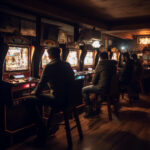Since its inception in 2009, Minecraft has not just been a game; it’s evolved into a cultural phenomenon, captivating the imagination of players around the globe. Central to its appeal are its iconic visuals, particularly the game icons and banners which have undergone significant transformations over the years. This showcase aims to explore the evolution of these visual elements, offering fans and newcomers alike a glimpse into the artistry behind the blocky facade of Minecraft.
The Origins and Evolution of Minecraft Icons
At the heart of Minecraft’s user interface are its game icons. These small, pixelated images are more than just aesthetic touches; they serve as crucial navigational tools. From the early days, where icons were basic and functional, to today’s detailed designs, the evolution is remarkable. Let’s take a closer look:
- 2009-2010: The Early Days – Icons were simplistic, focusing on key items like dirt, stone, and wooden tools.
- 2011-2014: Expansion and Refinement – As Minecraft introduced new items and blocks, icons became more varied and detailed.
- 2015-Present: HD and Beyond – With updates like the Texture Update, icons received high-definition makeovers, enriching the game’s visual appeal.
Minecraft Banners: A Creative Outlet
Another facet of Minecraft’s visual evolution is its banners. These items allow players to express creativity, marking territories, decorating spaces, or signaling allegiances. Here’s how banners have transformed:
- Introduction in 2014 – Banners arrived with the 1.8 update, introducing a new layer of customization.
- Patterns and Colors – Initially offering six base colors, Minecraft has continually added more options alongside various patterns, enabling millions of unique combinations.
- Community Creations – The community quickly embraced banners, using them in imaginative ways that continue to inspire new players.
Implications of the Visual Evolution
The transformation of Minecraft’s game icons and banners signifies more than just technical improvements; it reflects the game’s growth and the diversity of its player base. This evolution encourages creativity, aids in navigation and item organization, and enhances the overall aesthetic experience. As Minecraft continues to evolve, one can only anticipate the future innovations in game visuals that await.
Conclusion
Minecraft’s journey from a simple sandbox to a global phenomenon is mirrored in the evolution of its game icons and banners. These elements are quintessential to the game’s experience, providing both functionality and a means for artistic expression. As we’ve seen through this showcase, Minecraft’s visual elements have grown significantly, enriching the game for players old and new. Reflecting on this evolution offers a fascinating insight into the marriage of art and technology within the world of gaming.






